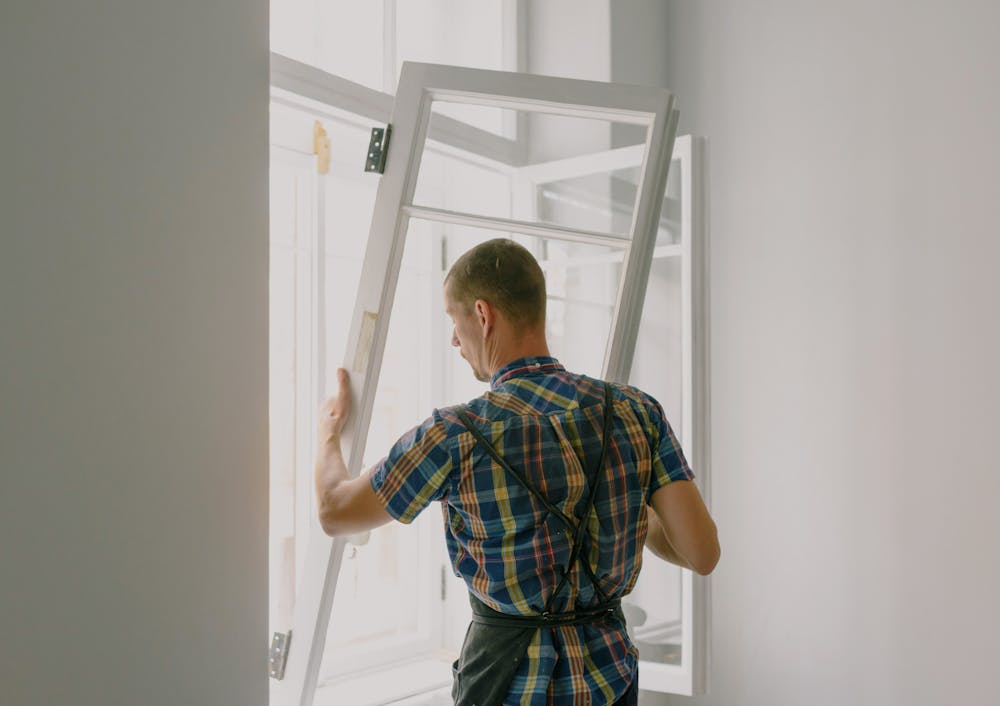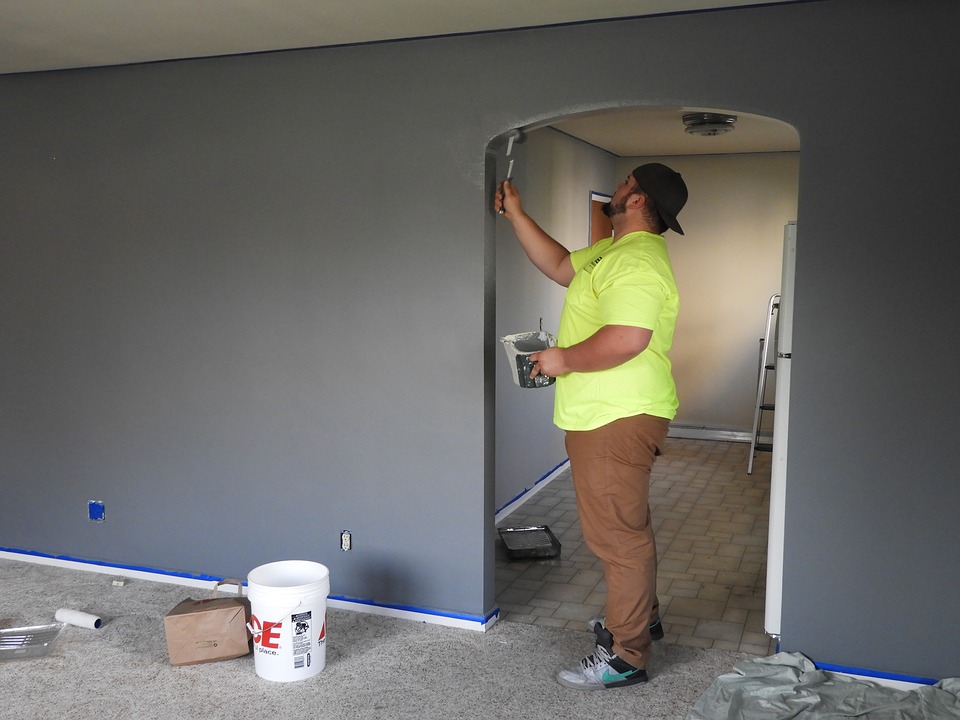Replacing glass in a window involves removing the damaged pane, cleaning the frame, and installing a new piece of glass. For small panes, DIY repairs are manageable with tools like a putty knife, glazier’s points, and sealant. However, for larger or more complex windows, professional assistance may be required to secure proper installation and safety.
Table of Contents
- Why You Might Need to Replace Glass in a Window
- Tools and Materials You’ll Need for the Job
- Step-by-Step Guide to Replacing Glass in a Window
- Common Challenges and How to Overcome Them
- Final Tips for Maintaining Your Windows
Few things are as frustrating as a cracked or shattered window pane—it compromises security, energy efficiency, and curb appeal. Whether the damage is due to an accident, weather, or wear and tear, replacing the glass promptly is essential.
For minor repairs, replacing the glass yourself is often feasible with the right tools and approach. However, if you’re dealing with larger windows, double-glazed units, or structural issues, expertise from professionals who specialize in window repairs can make all the difference. In Calgary, homeowners often turn to a trusted window company in Calgary for high-quality materials and reliable service.
In this guide, we’ll walk you through the process of replacing glass in a window, from preparation to installation, so you can restore functionality and aesthetics to your home
Why You Might Need to Replace Glass in a Window
Replacing glass in a window is often necessary due to various factors that can compromise its integrity. Understanding why this issue arises will help you address it promptly and prevent further damage. Here are the most common reasons why you might need to replace the glass in your window:
- Accidental Breakage: Everyday accidents, such as objects hitting the glass or excessive force applied to the pane, can lead to cracks or shattering.
- Weather Damage: Severe storms, hail, or temperature fluctuations can cause thermal stress, leading to cracks or breakage in the glass.
- Wear and Tear: Over time, windows can degrade due to exposure to sunlight, moisture, and environmental factors, making them more susceptible to damage.
- Security Concerns: Cracked or shattered glass compromises the security of your home, leaving it vulnerable to intruders or harsh weather conditions.
- Energy Efficiency: Damaged glass can reduce insulation, leading to drafts, higher energy bills, and discomfort during extreme temperatures.
Addressing these issues promptly not only restores functionality but also enhances your home’s safety, curb appeal, and energy efficiency.
Tools and Materials You’ll Need for the Job
Replacing glass in a window requires a few essential tools and materials to secure the job is done safely and effectively. Here’s what you’ll need:
- Putty Knife: Used to remove old glazing compound or putty from the frame. A flexible blade works best for scraping without damaging the wood or metal.
- Glazier’s Points: Small metal tabs that hold the new glass pane securely in place while the sealant dries.
- Glass Cutter: If you’re cutting a custom-sized pane, a glass cutter is essential for achieving precise measurements.
- Caulking Gun and Silicone Sealant: For sealing the edges of the new glass pane, securing a weatherproof and durable finish. Avoid oil-based sealants, as they can degrade over time.
- Safety Gear: Safety gloves and goggles are crucial to protect yourself from sharp glass shards and debris during removal and installation.
- Replacement Glass Pane: Measure the dimensions of the damaged pane carefully to make sure the replacement fits perfectly. Double-glazed or insulated glass may require professional fabrication.
Having these tools and materials ready will make the process smoother and more efficient, whether you’re handling a small repair or tackling a larger project.
Step-by-Step Guide to Replacing Glass in a Window
Replacing glass in a window is a manageable task if you follow these steps carefully. Here’s how to complete the process safely and effectively:
Removing the Damaged Glass Safely
Start by protecting yourself with safety gloves and goggles to avoid injury from sharp shards. Use a putty knife or flathead screwdriver to carefully remove any old glazing compound or putty around the edges of the damaged pane. Once the putty is removed, gently pry out the broken glass and any remaining glazier’s points. Dispose of the shards responsibly to prevent accidents.
Cleaning the Frame and Preparing It for the New Pane
Thoroughly clean the frame to secure a smooth surface for the new glass. Use a scraper or sandpaper to remove hardened putty or debris, then wipe the area with a damp cloth to eliminate dust. Allow the frame to dry completely before proceeding. If the frame is warped or damaged, consider repairing it or consulting a professional for assistance.
Installing the Replacement Glass and Securing It with Glazier’s Points
Carefully place the new glass pane into the frame, confirming it fits snugly. Use glazier’s points to secure the glass temporarily while you apply the sealant. Insert the points evenly around the perimeter of the pane using a putty knife or flathead screwdriver, pressing them gently into the frame.
Sealing the Edges with Glazing Compound or Silicone Sealant
Apply a generous amount of glazing compound or silicone sealant around the edges of the glass to create a weatherproof seal. Use a putty knife to smooth the compound, securing an even finish that blends with the frame. Wipe away any excess sealant with a damp cloth to maintain a clean appearance. Allow the sealant to cure according to the manufacturer’s instructions before exposing the window to moisture or stress.
Common Challenges and How to Overcome Them
Replacing glass in a window can present a few challenges, especially for first-time DIYers. Here are some common obstacles you might encounter and how to address them effectively:
- Uneven or Warped Frames: Older windows may have frames that are uneven or warped, making it difficult to secure the new glass properly. To address this, use a filler like wood putty or epoxy to level the surface before installing the pane. For metal frames, consider using shims to create a snug fit.
- Brittle or Hardened Old Putty: Removing old glazing compound can be tough if it has hardened over time. Use a heat gun to soften the putty before scraping it away with a putty knife. Be patient and work carefully to avoid damaging the frame.
- Large or Heavy Panes: Handling large or heavy panes can be risky without assistance. For oversized windows, recruit a helper to hold the glass steady during installation.
- Double-Glazed or Insulated Glass: Replacing double-glazed units requires precision and specialized tools, as these panes consist of multiple layers sealed together. Attempting this repair yourself may compromise the insulation. In such cases, professional fabrication and installation are recommended.
Final Tips for Maintaining Your Windows
Replacing glass in a window is just one part of keeping your windows in top condition. Regular maintenance can prevent future damage and extend the lifespan of your windows. Here are some tips to help you stay proactive:
- Inspect Windows Regularly: Check for cracks, chips, or signs of wear, especially after severe weather. Early detection can prevent small issues from becoming major problems.
- Clean Glass and Frames: Dirt and debris can accumulate in the frames and seals, leading to deterioration over time. Use a mild cleaner and soft cloth to keep your windows clean and functional.
- Lubricate Moving Parts: For windows with hinges or sliding mechanisms, apply silicone lubricant periodically to secure smooth operation.
- Seal Gaps and Cracks: Use weatherstripping or caulk to seal gaps around the frame, improving energy efficiency and preventing drafts.
By following these tips, you’ll not only maintain your windows but also enhance the comfort and value of your home. Start today, and enjoy the benefits of well-maintained windows!



